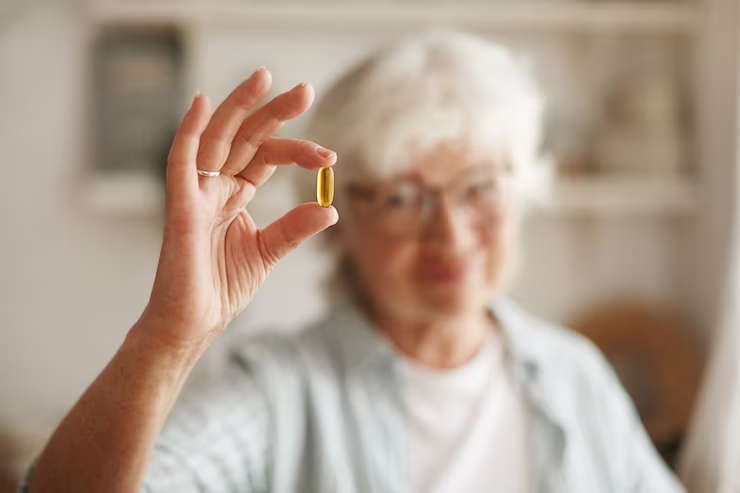Can vitamin D be the ray of sunshine that lights up the treatment of gastric cancer?
¿Puede la vitamina D ser el rayo de sol que ilumine el tratamiento del cáncer gástrico?
DOI:
https://doi.org/10.25176/RFMH.v23i3.5904Keywords:
Vitamin D, Gastric Neoplasms, AnticarcinogensAbstract
Mr. Editor
Gastric cancer, a malignant neoplasm that originates in the cells of the stomach lining, represents a significant burden in terms of mortality worldwide. According to data from the American Cancer Society, the estimated mortality rate is 4.9 per 100,000 people in 2021. In South America, mortality rates from gastric cancer continue to be of concern, with countries such as Chile and Peru reporting mortality rates of 18.7 and 13.6 per 100,000 persons respectively in 2021(1).
Gastric cancer being a major pathology mentioned in other previously published studies(2).
Vitamin D is a fat-soluble hormone that occurs in two main forms, D2 (ergocalciferol) and D3 (cholecalciferol). It is produced in the skin under exposure to ultraviolet light or derived from plant sterol. It is metabolized in the liver and kidney to active forms. In addition to its role in calcium homeostasis, studies suggest that vitamin D has anticancer effects by inhibiting cell proliferation and promoting apoptosis. Thus, there is increasing interest as a potential anticancer agent(3).
Studies have demonstrated the therapeutic potential of vitamin D3 in gastric cancer. An in vitro and in vivo study found that vitamin D3 suppresses the growth of gastric cancer cells by down-regulating the expression of CD44(4). In addition, another study showed that vitamin D3 affects gastric cancer progression by repressing BMP3 promoter methylation(5).
Raising vitamin D levels to 42 ng/mL is estimated to reduce disease rates and mortality in various cancers by 18% per year(6). Inactivation of Wnt/beta-catenin signaling, induction of cell apoptosis, and inhibition of cell invasion and cancer metastasis are some of the mechanisms described(6). Some studies are described in Table 1.
Although the antitumor effects of vitamin D3 have been demonstrated in preclinical studies, there is still a lack of adequately designed clinical studies evaluating the safety and efficacy of vitamin D3 in gastric cancer. In addition, further studies on the antitumor effects of vitamin D3 in gastric cancer are needed to develop more effective therapeutic strategies(4-6).
Downloads
References
Referencia
American Cancer Society | Cancer Facts & Statistics [Internet]. American Cancer Society | Cancer Facts & Statistics. [citado el 9 de abril de 2023]. Disponible en: http://cancerstatisticscenter.cancer.org/
Ramos AR, Sánchez RS. Helicobacter pylori y cáncer gástrico. Revista de Gastroenterología del Perú. 2008;258–66. doi:10.47892/rgp.2008.283.516
Nguyen MT, Huynh NNY, Nguyen DD, Ta NH, Van Nguyen T, Dang HT, et al. Vitamin D intake and gastric cancer in Viet Nam: a case-control study. BMC Cancer. 2022;22(1):838. doi:10.1186/s12885-022-09933-2
Li Q, Li Y, Jiang H, Xiao Z, Wu X, Zhang H, et al. Vitamin D suppressed gastric cancer cell growth through downregulating CD44 expression in vitro and in vivo. Nutrition. 2021;91–92:111413. doi:10.1016/j.nut.2021.111413
Zhao Y, Cai L-L, Wang H-L, Shi X-J, Ye H-M, Song P, et al. 1,25-Dihydroxyvitamin D3 affects gastric cancer progression by repressing BMP3 promoter methylation. Onco Targets Ther. 2019;12:2343–53. doi:10.2147/OTT.S195642
Bashir M, Prietl B, Tauschmann M, Mautner SI, Kump PK, Treiber G, et al. Effects of high doses of vitamin D3 on mucosa-associated gut microbiome vary between regions of the human gastrointestinal tract. Eur J Nutr. 2016;55(4):1479–89. doi:10.1007/s00394-015-0966-2
Chang S, Gao Z, Yang Y, He K, Wang X, Wang L, et al. miR-99b-3p is induced by vitamin D3 and contributes to its antiproliferative effects in gastric cancer cells by targeting HoxD3. Biological Chemistry. 2019;400(8):1079–86. doi:10.1515/hsz-2019-0102

Downloads
Published
How to Cite
Issue
Section
License
Copyright (c) 2023 Revista de la Facultad de Medicina Humana

This work is licensed under a Creative Commons Attribution 4.0 International License.



































